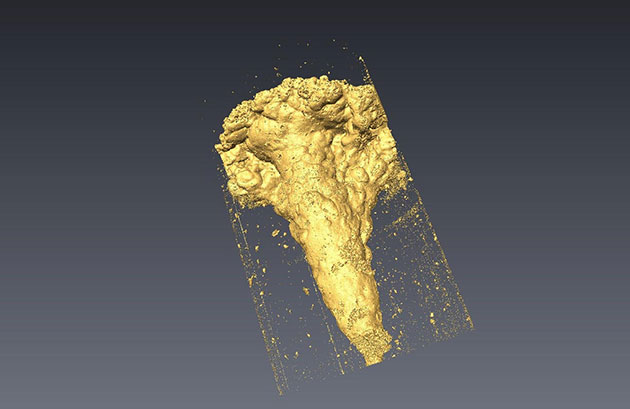Underground energy storage: supporting the transition to net zero carbon emissions
Underground storage for renewable energy resources could be a viable green solution as we transition to a net zero UK.
25/08/2021
The UK Government recently pledged to cut carbon emissions by 78 per cent by 2035 as part of a commitment for the country to be net zero in terms of carbon emissions by 2050 (with Scotland aiming to reach this target five years earlier in 2045).
The UK has made significant progress already. The share of electricity generated by renewables (principally wind and solar) now stands at 43 per cent, a threefold increase from a decade ago, and coal typically provides less than two per cent of electricity generation: in 2020 there were over 5000 coal-free hours of generation. There is an argument, however, that the hard work starts now, with the difficult-to-decarbonise areas of industry, domestic heating and transport to be addressed. These users of energy will require major changes to their ‘business as usual’ and new technologies that utilise the natural underground asset to store energy will be required to support further decarbonisation efforts.
A well-known issue with some renewable energy sources, including tidal, wind and solar, is that they are intermittent: turbines don’t turn on calm days and solar farms need the sun to generate electricity. Additionally, excess energy produced can be extremely difficult to store for later use. Geology can provide novel ways to store this energy, helping to increase the share of renewable energy sources in the energy market.
Cavern storage
The UK is fortunate in that there are naturally occurring beds of halite (rock-salt) — for example, under parts of Cheshire, Teesside, Lancashire and in the North and Irish seas.
Halite is an extremely useful substance. It is soluble and has an extremely low permeability that can contain gas. Large cavities can be developed in beds of halite with an established technique known as solution mining, with the resultant voids used having been used for the storage of natural gas since the 1960s and, on a much smaller scale, the storage of hydrogen since 1972.
Solution-mined caverns can be used to store excess wind and solar energy through the compression of air in them; this is known as compressed air energy storage (CAES). Energy can be stored in this way for longer periods than in traditional batteries. The technology for CAES has been demonstrated at several locations worldwide and we think the geology is suitable in several areas of the UK to support schemes in the UK. When air is compressed, the heat of compression can be stored and used later to heat the air that is released from the cavern to drive turbines to generate electricity.
A particular research area that BGS is working on is the integrity of halite, where gas in caverns may be filled and emptied at faster rates and with greater pressure variations than current natural gas storage operations. This would allow for increased volumes of hydrogen to be stored and used. In particular, the properties of bedded halites, where mudstone and other insoluble material is interbedded with the halite successions, are being investigated.
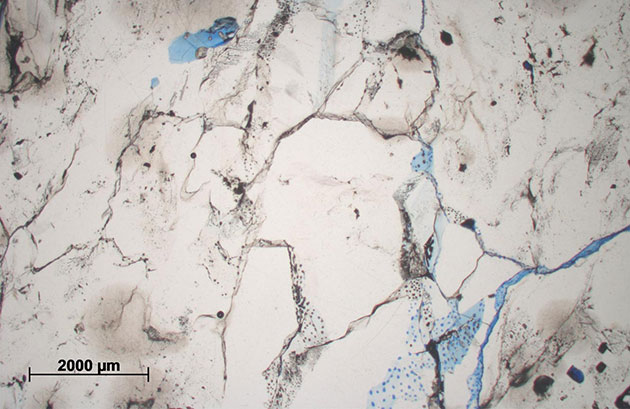
Halite is a complex, crystalline rock that is viscoplastic, meaning it flows naturally in the subsurface and can self-heal fractures over geological time. Halite is also soluble. These properties mean that large voids in the subsurface can be created by solution mining, resulting in storage space that is gas-tight and suitable for the storage of natural gas, compressed air and hydrogen; three principle energy carriers. BGS © UKRI.
Hydrogen
Hydrogen has the potential to be manufactured without a carbon footprint from a wide range of materials such as natural gas, biomass and some types of waste. Whether produced by electrolysis or steam methane reformation (where the associated carbon dioxide that is produced can be captured and stored), hydrogen can be blended into the existing natural gas network for domestic use, electricity generation, or as a fuel cell in cars and lorries.
The current hydrogen storage option in the subsurface is solution-mined caverns. However, this is limited to regions with halite deposits of suitable depths and thicknesses within which caverns can be developed. As part of the Industrial Decarbonisation Research and Innovation Centre (IDRIC), BGS is researching whether hydrogen storage in porous rocks, such as sandstone, could be viable and under what conditions the natural geology may present a barrier to this type of storage. If storage in porous rocks is a possibility, without loss of quality or amount of the stored gas, then many more regions in the UK without currently obvious subsurface storage options could become potential sites for the hydrogen storage of bedrock, including London, South Wales and central Scotland.
Thermal storage
Porous rocks also have the potential to act as a store for heat via so-called aquifer thermal energy storage (ATES). Such thermal stores, where heat is stored in pore fluids, have the potential to capture excess heat produced from industrial processes or homes, which can then be used at locations or times where and when heat is required.
The efficiency of ATES schemes is influenced by the composition of bedrock, structural elements and properties of confining layers. These aspects will be researched by BGS scientists at the UK Geoenergy Observatory in Cheshire as part of an EPSRC-funded research programme.
About the author

Edward Hough
Research lead, underground energy storage
Relative topics
Latest news

Goldilocks zones: ‘geological super regions’ set to drive annual £40 billion investment in jobs and economic growth
10/06/2025
Eight UK regions identified as ‘just right’ in terms of geological conditions to drive the country’s net zero energy ambitions.

The challenge of assessing the UK economy’s dependence on mineral supply
28/11/2024
Critical, essential, or just plain important? Dr Gavin Mudd, director of the Critical Minerals Intelligence Centre, discusses the findings and new methodology featured in the 2024 UK Criticality Assessment.

Local MP helps BGS launch a ‘living laboratory’
05/03/2024
BGS is implementing a low-carbon heating system to help meet its net zero targets and provide data to the public.

BGS adds more than 60 new carbon dioxide storage units to its national carbon dioxide storage database
30/01/2024
BGS has delivered its first major update of the national carbon dioxide storage database, CO2 Stored.
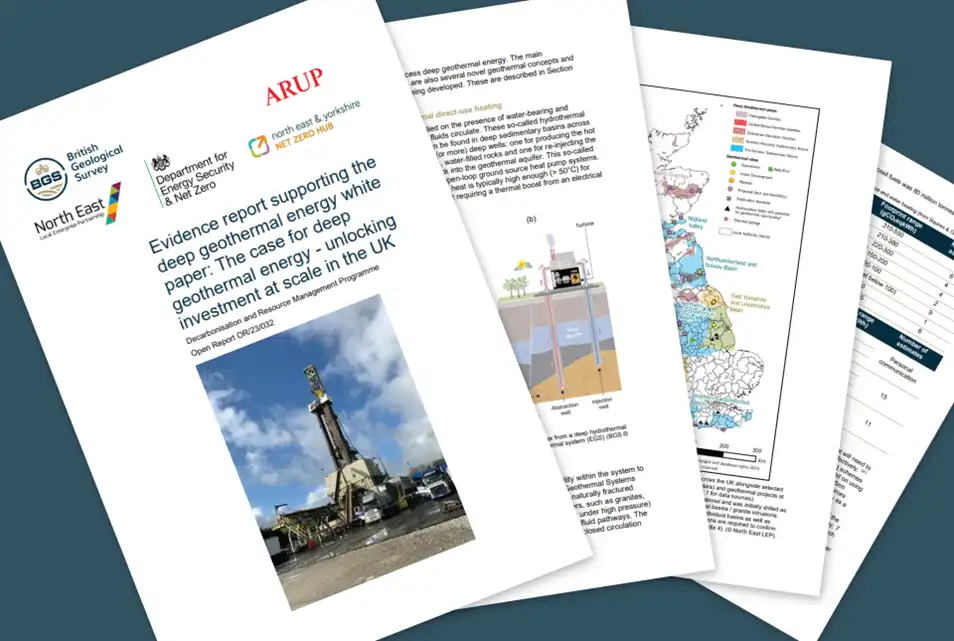
Evidence report on deep geothermal energy opportunities in the UK released
16/11/2023
BGS has published a detailed evidence report that underpins a deep geothermal White Paper.

A new open dataset to benefit onshore geoscience research
15/06/2023
Data from deep onshore hydrocarbon wells is being released on an open access basis to help meet the UK’s net zero targets.

NERC recognised by the Carbon Trust for its step towards net zero
07/06/2023
The Natural Environment Research Council (NERC) has achieved the ‘taking action’ tier of the Carbon Trust’s Route to Net Zero Standard.
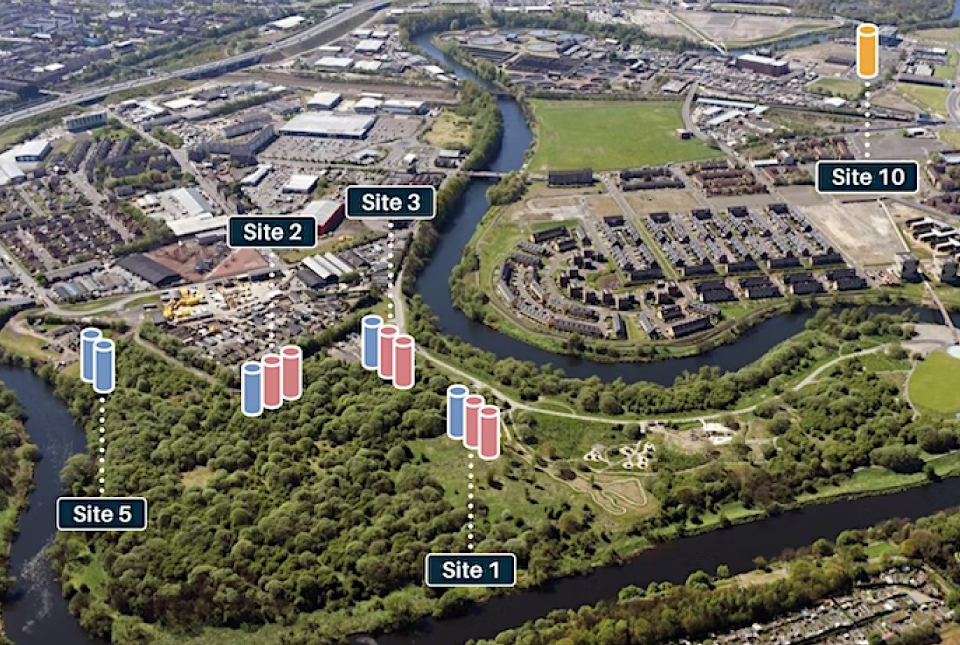
UK Geoenergy Observatories — open events in Glasgow
Event from 26/04/2023 to 27/04/2023
You are invited to visit the UK Geoenergy Observatory in Glasgow, to find out more about what the facility can offer you as a potential user.
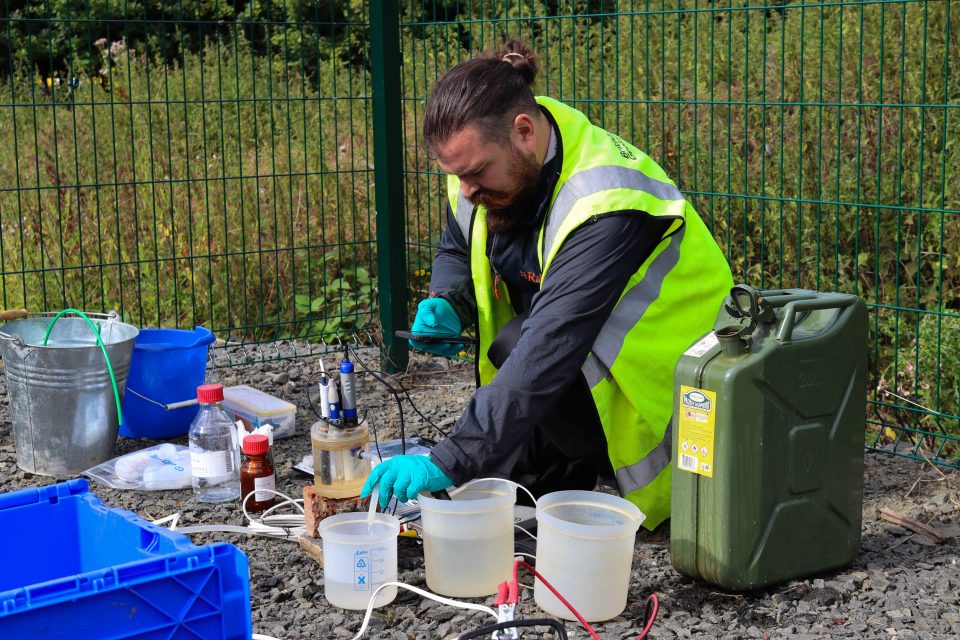
UK Geoenergy Observatories: time zero for net zero
01/12/2022
The BGS-led UK Geoenergy Observatories project is shining a light on the subsurface’s potential to provide geothermal energy.

BGS joins European Geothermal Congress to highlight UK’s geothermal potential
21/10/2022
The European Geothermal Congress will discuss how the geothermal sector can help with the energy crisis.

Identifying the science challenges for UK carbon storage
07/07/2022
A new report underlines importance of community engagement in achieving the UK national climate change targets.
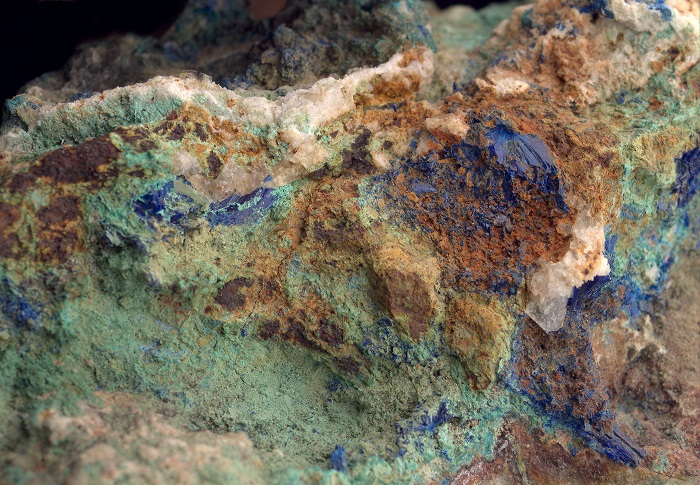
UK’s Critical Minerals Intelligence Centre to help build a more resilient economy
04/07/2022
The UK’s new centre to collect and analyse information on the supply of critical minerals, which are vital to the UK’s economic success and national security, has officially launched.



